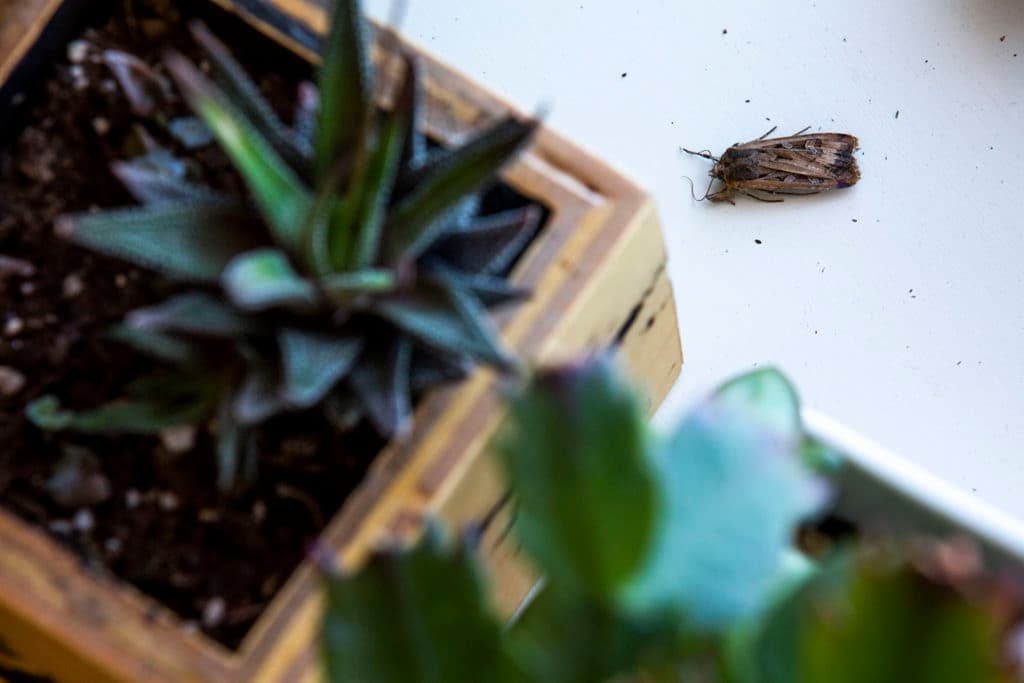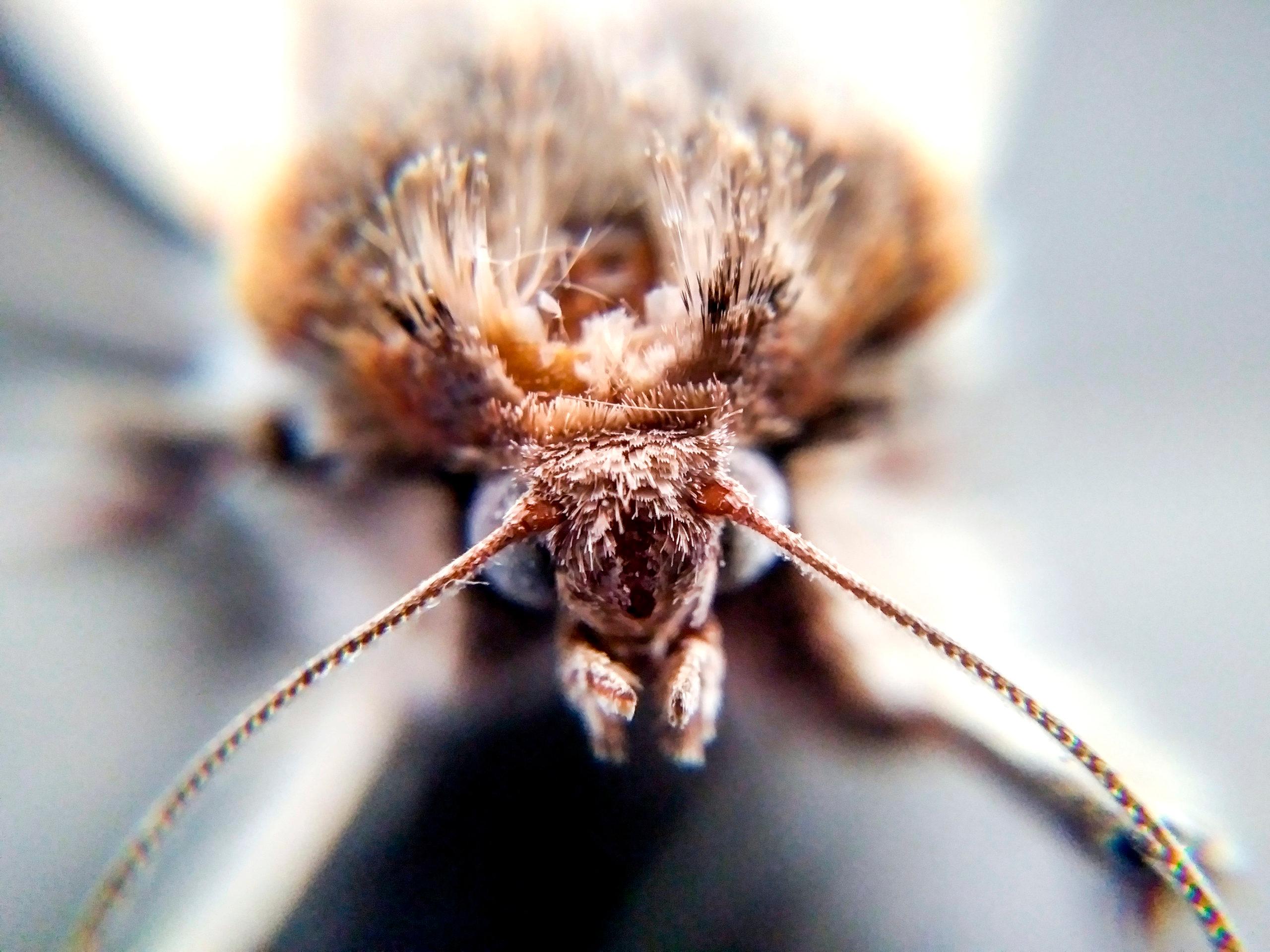Back in the 90s, DJ Janik walked from his old downtown Denver apartment to get his Jeep Wrangler from the garage.
When he opened the car’s door, a miller moth started fluttering around. He wasn’t scared, but he knew driving with a moth flitting around would be dangerous.
He decided to kill it.
“I spanked my hand against the windshield,” he recalled, “and it shattered like a star.”
Janik is one of countless Denverites who have tangled with miller moths, the invertebrates that descend on Denver in a springtime swarm every year. We asked readers for their miller moth stories, and heard about everything from property damage to body horror – and also how the moths are a sweet treat for gorillas at the zoo.
But first, what happened to the moth that bugged Janik?
“I think I got him,” Janik said. “But to be frank, I was laughing so hard at that point, he may have slipped away.”
A broken windshield and a few hundred dollars down the drain, Janik could have blamed it on the moth.
“I could,” he said. “But it was me punching the windshield.”
Janik learned a hard lesson.
“It’s a sign of how violence isn’t a good thing,” he said.
Getting an earful
Angela Weeden works as a historical interpreter – dressing up in old-fashioned clothing and teaching about history – at an outdoor metro museum that would rather not be mentioned in this story.

Not too long ago, families were wandering around the museum grounds. As she prepared to perform, she opened a shed.
A cloud of miller moths flew into her face.
“No big deal,” she thought — until one of the moths flew directly into her right ear.
She quietly tried to suppress a panic attack as guests wandered the grounds.
“OK, hold still,” she told herself. “It’ll get itself out. This will be fine.”
The miller moth could not dislodge itself, wiggling against her eardrum.
“It felt like it was clawing at my brain,” she said.
She feared if she tried to pull the moth out, she would only push it farther in.
She wondered: Is it better to have an alive moth or a dead moth in my ear? Both options sounded terrible.

“I’m going to have to drive myself to the ER with a moth in my ear,” she thought. “I don’t think I can do that. This is really distracting.”
A museum volunteer noticed her struggling. Weeden finally explained what was happening.
“Oh,” the volunteer said. “I used to work for an audiologist.”
“What do I do?” Weeden asked.
“The airplane trick,” the volunteer said. “Plug your nose and blow out.”
She was dubious, but she tried it. The nasal gush pushed the moth enough for the volunteer to grab hold and pull it from her ear.
Did the moth survive?
“I have no idea,” Wheeden said. “She pulled it out and flung it.”

The museum required her to fill out a workers’ compensation incident report. The incident report has since become part of organizational lore, often cited in trainings.
“I will now forever be the woman who got a moth stuck in her ear,” she said.
Snacks for some
Eve Brady’s family was sound asleep when she heard a hysterical scream from her four-year-old daughter’s room.
Mom went running, heart racing, expecting to find a kidnapper. But nothing seemed amiss. Brady asked what was wrong.
“The moths are going tip, tip, tip on the ceiling,” the daughter cried.
“Oh, for heaven’s sake, moths won’t hurt you,” Brady assured her.
“I’m scared,” the daughter said.
That was just the beginning. The next day, miller moths descended on the metro.

“Our little black kitten, Hector, found great sport in jumping up and catching them in flight,” Brady wrote Denverite.
All evening long, Hector happily ate moths.
“The following morning, he just sat in a corner looking completely miserable for several hours,” Brady wrote.
He was suffering from a bellyache – probably from his moth binge.
“My daughter thought her kitten was a hero for hunting them down and devouring them,” Brady said.
Jody Hodges, a former animal keeper at the Denver Zoo, enjoyed watching Evelyn the gorilla catch miller moths, rip off their wings and gobble up their bodies.
Though some people have made a snack of miller moths, they’re probably not on most Denverites’ food plans. Still, it’s worth remembering: Miller moths are a food source for other animals, important pollinators serving a critical ecological role.
Those moths that escape the lights of Denver will fly on up to the Rockies — where, often enough, they become snacks for bears.












